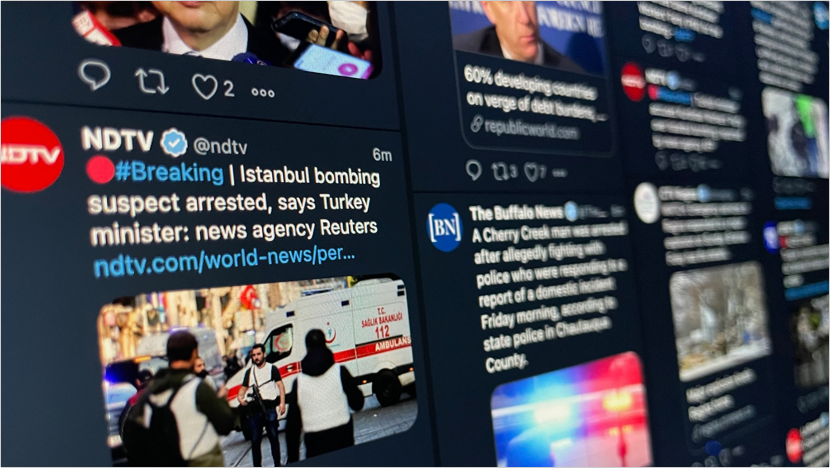For more than a decade, Twitter has been a staple for organizations to identify emerging threats and keep tabs on global events. But the company’s rapid changes have rattled many analysts, researchers and journalists. How long will Twitter survive? Will users flee to other platforms, fragmenting into closed groups and private channels?
Even without the scale of Facebook, Twitter’s open real-time architecture redefined breaking news, attracting eyewitnesses, journalists and government officials to the same searchable platform. Even if the news didn’t originate on Twitter, it gets there in a hurry.
“In a way, Twitter has become a kind of aggregator of information,” says Eliot Higgins, founder of the open source intelligence (OSINT) investigation company Bellingcat. “A lot of this stuff you see from Ukraine, the footage comes from Telegram channels that other people are following, but they’re sharing it on Twitter.”
But with mass layoffs and Elon Musk’s move-fast-and-break-things approach, Twitter is at risk of becoming dysfunctionally noisy or falling victim to a cyberattack. Or worse: the company may collapse under its own debt and declining revenue. For the time being, most users are sticking around due to the lack of a clear alternative. But facing concurrent financial, cybersecurity and legal challenges, Musk admits Twitter could go bankrupt.
That’s why it’s a good time to assess your organization’s reliance on Twitter and take stock of the larger information ecosystem. Some teams – like global security, crisis management and marketing – rely on Twitter’s real time benefits. Other teams take advantage of Twitter’s deep archive for research and investigations.
“Pretty much everyone doing public-facing OSINT has used Twitter as their main outlet,” said one prominent OSINT researcher. “If Twitter goes down, the OSINT community in general is in deep trouble.”
While some use Twitter and Tweetdeck directly, others subscribe to social media monitoring tools. Soon after Musk took over at Twitter, many vendors have been fielding calls from companies concerned about the risk of a Twitter shutdown or slowdown on security, risk and reputation monitoring. Twitter is a dominant source for some social media and signal detection vendors. For others, it’s part of a wider spectrum of data.
As with most risk avoidance, diversification is key. Analysts and journalists are testing social apps like Mastodon, CounterSocial, Cohost and Tribel. Others are revisiting existing platforms like Discord, Reddit and even Tumblr. A few say they’ll just spend more time on legacy players TikTok, Instagram and Snapchat.
If Twitter experiences a significant exodus, users will splinter across these platforms rather than migrate to an obvious replacement. That’s because at this point, there isn’t one. To make matters more complicated, many of these platforms are private, semi-private or just not accessible through automation.

At Factal our unique roots in journalism have proven to be a key advantage. Newsrooms are wired to chase down information – automated or not – and verify details across sources. With journalists who worked at NBC News, BBC News, Reuters, Bloomberg and many others, our team is always on the hunt. Our AI-powered detection technology was designed from the ground up to be plug-and-play for all kinds of publicly-available data, including Twitter.
For other teams and tools with a high reliance on Twitter, a downturn would leave a mark. By assessing your exposure and diversifying your sources now, you can mitigate any impact to come.
(Cory Bergman is the co-founder of Factal, the breaking news and risk intelligence platform. He’s addicted to Twitter and doesn’t think it will go away altogether. But you can also follow him on Mastodon.)

